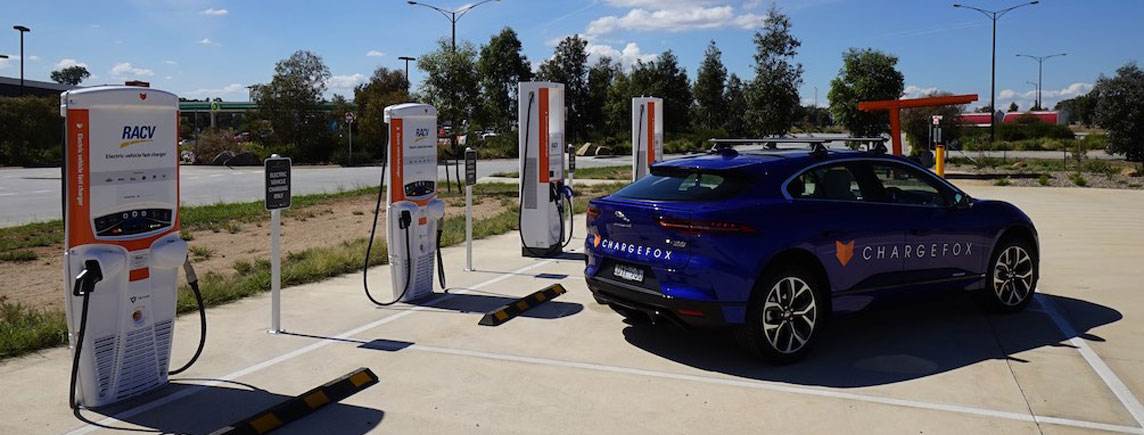Chargefox Electric Vehicle Charging Network Project

The project sought to enable more confident driving by EV owners between Australia’s major cities through the development and construction of 22 ultra-rapid EV charging sites along major driving routes between Brisbane and Adelaide along the coast of Eastern Australia, and in and around Perth in Western Australia, at approximately 200 kilometres apart.
Start and end dates: Start October 2018, completed June 2020
Lead organisation: Chargefox
Location: National (Australia)
Contact person: Martin Andrews, Chargefox CEO
Link to project website: Chargefox Electric Vehicle Charging Network Project
Included technologies
- Battery recharging infrastructure
Project stages
- Deployment encouragement
Included locations
- Rural motorways and divided highways
- Rural main highways
Benefits directly sought by the project
- Reduce environmental impact
- Increase public support to assist deployment and adoption
- Commercial return - product / service development
Project scale
- 22 charging sites along major driving routes between Brisbane and Adelaide along the coast of Eastern Australia, in and around Perth in Western Australia, and in Tasmania, at approximately 200km apart.
Further details on included technologies
- Each Charging Site will hold at least two (2) DC Charging Stations of a minimum charging capacity of 150kW each
Allow confident travel between major Australian cities by EV drivers by providing ultra-rapid EV charging sites approximately 200km apart along major driving routes between Brisbane and Adelaide along the coast of Eastern Australia, and in and around Perth in Western Australia.
Lessons learned that inform future technology deployments
- The project has provided local data on how charging stations are used, for example many drivers are charging for 20-30 minutes and consuming 10-20kWh energy, meaning sessions are top-up, rather than fill-up.
- Dynamic connections to the electricity network can reduce the need for high-voltage connections. These connections limit the EV charging station to measuring and using only the available power load for that location.
- New high-voltage connections are a challenge, with multiple potential causes of delay.
- Remote commissioning of sites allows more efficiency for delivery of geographically disparate sites, but requires the establishment of the necessary processes and systems.
- Procuring the right charging equipment was a major task, using about 1/3 of the project budget and critical to project success, however the market for high power chargers is maturing over time.
Links to project lessons learned and / or benefit assessment reports
Overall lessons learned report
First interim lessons learned report
Second interim lessons learned report
Third interim lessons learned report
Fourth interim lessons learned report
Links to any other supporting project reports
Last updated: May 2021.
